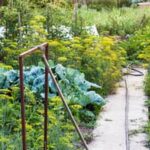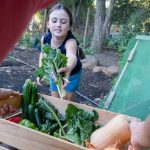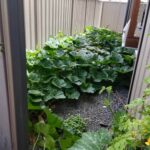Gardening vegetables that have an extended picking time can be a rewarding experience for gardeners looking to enjoy a continuous harvest throughout the season. The benefits of growing these types of vegetables are plentiful, providing a steady supply of fresh produce without the need for constant replanting. In this article, we will explore different varieties of vegetables with extended picking times and offer tips on how to care for them to maximize your harvest.
Tomatoes are a popular choice for gardeners seeking a prolonged picking window. With various types available, from cherry tomatoes to beefsteak varieties, there is something for every taste preference. By selecting different cultivars that ripen at different rates, you can enjoy fresh tomatoes from early summer through the fall months. Proper care, such as staking and regular watering, is essential to ensure a bountiful harvest.
Peppers are another vegetable that can provide a prolonged harvest if cared for properly. From sweet bell peppers to spicy jalapenos, there are numerous options to choose from. By selecting pepper plants that produce continuously throughout the season and providing adequate sunlight and nutrients, you can enjoy an abundance of peppers for cooking or snacking. Stay tuned as we delve into the specifics of growing peppers with extended picking times in the following sections of this article.
Tomatoes
Indeterminate vs. Determinate Varieties
Indeterminate tomatoes continue to grow and produce fruit throughout the season, resulting in a longer picking time compared to determinate varieties which produce fruit all at once. Indeterminate tomatoes require staking or caging for support as they can reach heights of up to 6-8 feet. Determinate tomatoes, on the other hand, have a more compact growth habit and are ideal for containers or small garden spaces.
Caring for Tomato Plants
To ensure a successful harvest of tomatoes with an extended picking time, proper care is essential. Tomatoes require full sun, well-draining soil rich in organic matter, regular watering (1-2 inches per week), and fertilization throughout the growing season. Mulching around the base of the plants can help retain moisture and prevent weeds. Pruning suckers from indeterminate varieties can promote better air circulation and fruit production.
By selecting the right tomato varieties and providing them with proper care, gardeners can enjoy a bountiful harvest of fresh tomatoes over an extended period. Whether used in salads, sauces, salsas, or enjoyed simply sliced with a sprinkle of salt, homegrown tomatoes are truly a versatile and rewarding vegetable to grow in your garden.
Peppers
Types of Peppers With Long Picking Windows
When selecting pepper varieties for your garden, consider choosing those known for their extended picking times. Some examples include banana peppers, jalapenos, poblano peppers, and cayenne peppers. These types of peppers tend to produce fruit continuously throughout the growing season, allowing for multiple harvests over a longer period. By planting a mix of these varieties, you can ensure a steady supply of fresh peppers for your culinary creations.
Tips for Growing Peppers Successfully
To maximize the yield and prolong the harvest of your pepper plants, it’s essential to provide them with the right growing conditions. Peppers thrive in full sun and well-draining soil rich in organic matter. Ensure they receive adequate water, especially during hot and dry periods, but be cautious not to overwater as this can lead to diseases.
Regularly fertilize your pepper plants with a balanced fertilizer high in phosphorus to promote flower and fruit production. Additionally, monitor for common pests like aphids and caterpillars that may damage the plants and affect the harvest. By following these tips, you can enjoy a bountiful pepper harvest throughout the growing season.
Lettuce
To maintain the quality of your lettuce over an extended period, proper care is crucial. Make sure to provide consistent moisture through watering, especially during dry spells, as lettuce tends to become bitter when stressed by drought. Mulching around the base of the plants can help retain moisture in the soil and prevent weeds from competing for nutrients. Additionally, applying a balanced fertilizer every few weeks can promote healthy growth and keep your lettuce plants productive throughout the season.
Another factor to consider when growing lettuce with an extended picking time is succession planting. By staggering your plantings every two weeks or so, you can ensure a continuous harvest of fresh leaves rather than overwhelming yourself with more lettuce than you can consume at once.
This practice also helps in preventing a glut of mature lettuces all ready for harvest simultaneously while allowing younger plants to mature for future pickings. With proper planning and maintenance, you can enjoy fresh and crisp lettuce from your garden from early spring well into fall.
Beans
When cultivating beans with an extended picking time, it is crucial to provide them with proper care and maintenance. Ensure that they receive adequate sunlight, water, and well-drained soil for optimal growth. Additionally, adding compost or fertilizer rich in potassium can help boost bean production and prolong the picking season. Regularly check for pests and diseases that may affect your beans and take prompt action to prevent any damage.
To make the most out of your bean harvest, consider utilizing different planting methods such as succession planting or intercropping with other vegetables. Succession planting involves sowing new bean seeds every few weeks to ensure a continuous supply throughout the season.
Intercropping beans with taller plants like corn or sunflowers can provide them with support while maximizing space in your garden. By following these methods and selecting the right bean varieties, you can enjoy a bountiful harvest of fresh beans all season long.
- Pole beans
- Bush beans
- Succession planting techniques
Herbs
To keep your herbs productive throughout the season, it is essential to practice proper harvesting techniques. When harvesting herbs, always make clean cuts above a set of leaves to encourage new growth. Avoid cutting more than one-third of the plant at a time, as this can stress the herb and slow down its regrowth. Regularly pinching off flowers also helps promote bushier growth and prevents the plant from going to seed too soon.
Creating a schedule for harvesting your herbs can also help maintain their productivity. For example, basil should be harvested frequently by pinching off the top leaves every few weeks to prevent flowering and encourage branching. Mint can be cut back hard at least once during the growing season to promote fresh growth. By staying on top of your herb harvests and following these techniques, you can ensure a bountiful supply of fresh herbs all season long.
In addition to ensuring continual harvests, proper care practices such as regular watering, adequate sunlight exposure, and occasional fertilization are crucial for keeping your herb garden thriving. With dedication and attention to detail, you can enjoy a diverse selection of flavorsome herbs that enhance your culinary creations throughout the year.
Zucchini and Squash
To prevent overproduction of zucchini and squash, it is essential to keep a close eye on the plants as they mature. Regularly check the plants for ripe fruits and harvest them promptly to encourage more production. Additionally, proper spacing between plants can help prevent overcrowding, which can lead to reduced yields. Providing adequate nutrients through fertilization and ensuring consistent watering can also contribute to healthier plants and prolonged harvest periods.
One method to extend the picking time of zucchini and squash is through succession planting. By sowing seeds or transplanting seedlings at intervals, you can stagger the maturity dates of the plants, resulting in a continuous supply of fresh produce.
This technique allows you to enjoy these delicious vegetables throughout the season rather than being overwhelmed with a surplus all at once. With careful planning and maintenance, you can reap the benefits of a bountiful zucchini and squash harvest for an extended period.
| Zucchini and Squash Varieties | Planting Tips |
|---|---|
| Costata Romanesco | Harvest fruits promptly for prolonged production |
| Yellow Crookneck Squash | Succession planting for continuous harvest |
Carrots and Radishes
When planting carrots for an extended picking time, it’s essential to sow seeds every 2-3 weeks starting in early spring and continuing until mid-summer. This method allows for a continuous harvest as each batch matures at different times. Additionally, consider using varieties such as ‘Nantes’ or ‘Danvers’ that are known for their sweet flavor and crisp texture. Carrots thrive in well-drained soil with plenty of sunlight, so be sure to provide adequate conditions for optimal growth.
Similarly, when it comes to radishes, staggering your planting schedule can help maintain a constant supply of these crunchy vegetables. Radish seeds can be sown directly into the ground every 10-14 days from early spring to late summer. Varieties like ‘Cherry Belle’ or ‘French Breakfast’ are popular choices that mature quickly, making them perfect for succession planting.
With their peppery taste and vibrant colors, radishes add a pop of flavor to salads, sandwiches, and other dishes. Proper storage techniques such as removing the tops before refrigerating can help extend the shelf life of both carrots and radishes after harvesting.
| Vegetable | Recommended Varieties | Planting Schedule |
|---|---|---|
| Carrots | ‘Nantes’, ‘Danvers’ | Every 2-3 weeks from early spring to mid-summer |
| Radishes | ‘Cherry Belle’, ‘French Breakfast’ | Every 10-14 days from early spring to late summer |
By following these guidelines for planting carrots and radishes with staggered schedules and implementing proper storage techniques post-harvesting, you can enjoy a bountiful supply of fresh vegetables throughout the growing season. Whether added to salads, roasted as a side dish, or enjoyed on their own as a snack, homegrown carrots and radishes are sure to enhance your culinary creations while providing numerous health benefits.
Start your vegetable garden today and experience the joy of growing your own food with extended picking times.
Conclusion
In conclusion, gardening vegetables that have an extended picking time can offer numerous benefits to both experienced gardeners and beginners. Not only do these varieties provide a continuous harvest throughout the season, but they also allow for a more sustainable and cost-effective way of enjoying fresh produce. By incorporating a variety of vegetables with long picking windows in your garden, you can ensure a diverse and constant supply of homegrown goodness right at your fingertips.
From tomatoes to peppers, lettuce to beans, and even herbs like basil and mint, there are plenty of options for those looking to cultivate a garden with extended picking times. Each type of vegetable requires specific care and attention, but the rewards are well worth the effort. Whether you have limited space or a large backyard, there are ways to incorporate these varieties into your garden and enjoy the fruits of your labor for an extended period.
So why not take the plunge and start your own garden with vegetables that have an extended picking time? Not only will you reap the benefits of fresh, healthy produce throughout the season, but you’ll also experience the joy of nurturing plants from seed to harvest.
Whether you’re a seasoned gardener or just starting out, growing vegetables with long picking windows is a rewarding experience that can bring delicious flavors to your table and a sense of accomplishment to your soul. Happy gardening.
Frequently Asked Questions
What Vegetable Takes the Longest to Harvest?
Certain vegetables, like winter squash and pumpkins, take the longest to harvest due to their long growing season. These plants need several months of warm weather before they are ready to be harvested.
What Vegetables Are Continuous Harvest?
Vegetables that offer a continuous harvest include tomatoes, zucchini, cucumbers, and peppers. These crops produce fruits throughout the growing season, allowing for multiple harvests rather than a single large one.
What Is the Fastest Growing Vegetable to Pick?
One of the fastest-growing vegetables to pick is radishes. These root vegetables have a quick turnaround time from planting to harvesting, usually ready in as little as three weeks after sowing the seeds. Their rapid growth makes them a popular choice for beginner gardeners looking for quick results.

If you’re looking to get into vegetable gardening, or are just looking for some tips on how to make your current garden better, then you’ve come to the right place! My name is Ethel and I have been gardening for years. In this blog, I’m going to share with you some of my best tips on how to create a successful vegetable garden.





